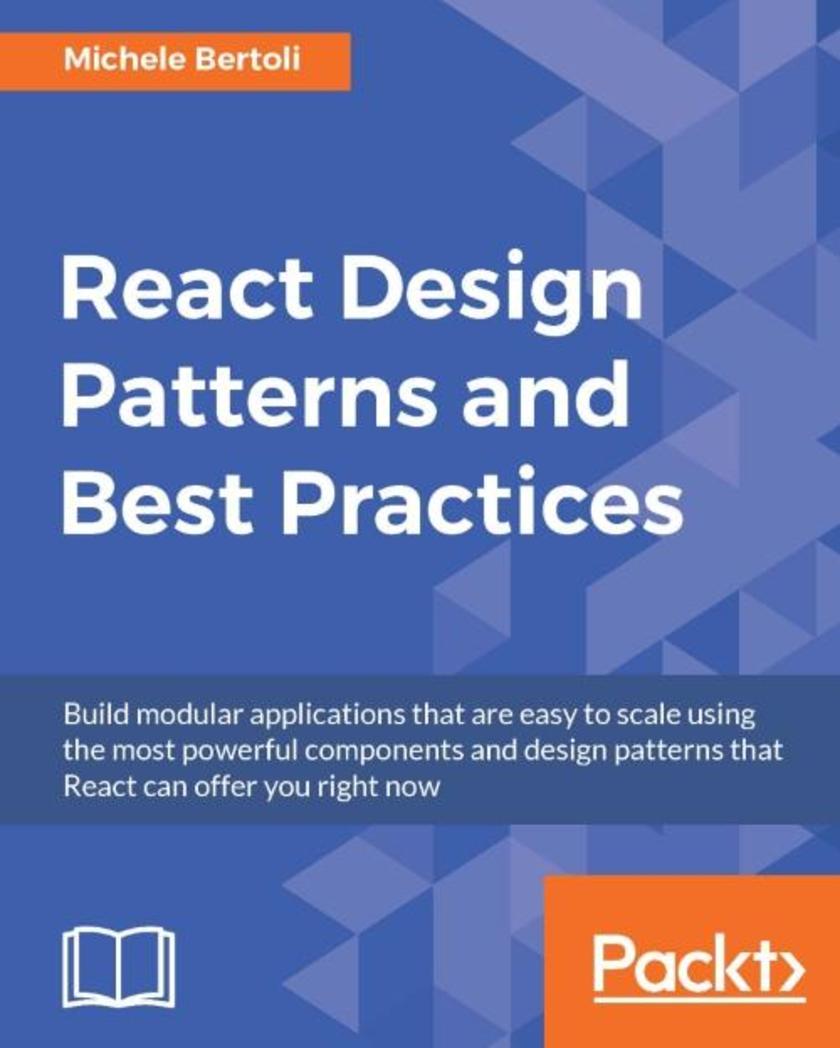
React Design Patterns and Best Practices
¥80.65
Build modular applications that are easy to scale using the most powerful components and design patterns that React can offer you right now About This Book Dive into the core patterns and components of React.js in order to master your application's design Improve their debugging skills using the DevTools This book is packed with easy-to-follow examples that can be used to create reusable code and extensible designs Who This Book Is For If you want to increase your understanding of React and apply it to real-life application development, then this book is for you. What You Will Learn Write clean and maintainable code Create reusable components applying consolidated techniques Use React effectively in the browser and node Choose the right styling approach according to the needs of the applications Use server-side rendering to make applications load faster Build high-performing applications by optimizing components In Detail Taking a complete journey through the most valuable design patterns in React, this book demonstrates how to apply design patterns and best practices in real-life situations, whether that's for new or already existing projects. It will help you to make your applications more flexible, perform better, and easier to maintain – giving your workflow a huge boost when it comes to speed without reducing quality. We'll begin by understanding the internals of React before gradually moving on to writing clean and maintainable code. We'll build components that are reusable across the application, structure applications, and create forms that actually work. Then we'll style React components and optimize them to make applications faster and more responsive. Finally, we'll write tests effectively and you'll learn how to contribute to React and its ecosystem. By the end of the book, you'll be saved from a lot of trial and error and developmental headaches, and you will be on the road to becoming a React expert. Style and approach The design patterns in the book are explained using real-world, step-by-step examples. For each design pattern, there are hints about when to use it and when to look for something more suitable. This book can also be used as a practical guide, showing you how to leverage design patterns.

Augmented Reality Game Development
¥80.65
Create your own augmented reality games from scratch with Unity 5 About This Book Create your own augmented reality game from scratch and join the virtual reality gaming revolution Use the latest Unity 5 VR SDK to create pro-level AR games like Pokémon Go Innovate and explore the latest and most promising trend of AR gaming in the mobile gaming industry Who This Book Is For This book is for those who have a basic knowledge of game development techniques, but no previous knowledge of Unity is required. Some basic programming knowledge would be desirable, but the book is an introduction to the topic. The book is also suitable for experienced developers new to GIS or GPS development. What You Will Learn Build a location-based augmented reality game called Foodie Go Animate a player’s avatar on a map Use the mobile device’s camera as a game background Implement database persistence with SQLLite4Unity3D to carry inventory items across game sessions Create basic UI elements for the game, inventory, menu, and settings Perform location and content searches against the Google Places API Enhance the game’s mood by adding visual shader effects Extend the game by adding multiplayer networking and other enhancements In Detail The heyday of location-based augmented reality games is upon us. They have been around for a few years, but the release of Pokémon Go was a gamechanger that catalyzed the market and led to a massive surge in demand. Now is the time for novice and experienced developers alike to turn their good ideas into augmented reality (AR) mobile games and meet this demand! If you are keen to develop virtual reality games with the latest Unity 5 toolkit, then this is the book for you. The genre of location-based AR games introduces a new platform and technical challenges, but this book will help simplify those challenges and show how to maximize your game audience. This book will take you on a journey through building a location-based AR game that addresses the core technical concepts: GIS fundamentals, mobile device GPS, mapping, map textures in Unity, mobile device camera, camera textures in Unity, accessing location-based services, and other useful Unity tips. The technical material also discusses what is necessary for further development to create a multiplayer version of the game. At the end, you will be presented with troubleshooting techniques in case you get into trouble and need a little help. Style and approach This book shows you how to create every step of the game and gives practical examples.
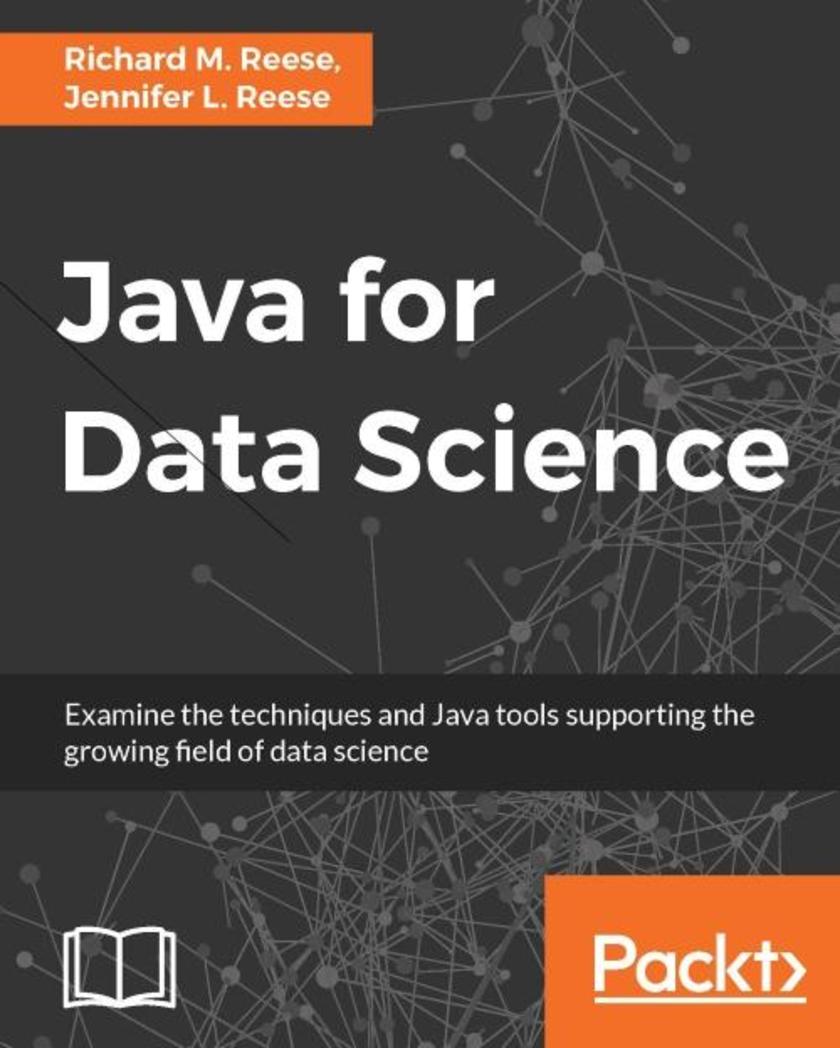
Java for Data Science
¥90.46
Examine the techniques and Java tools supporting the growing field of data science About This Book Your entry ticket to the world of data science with the stability and power of Java Explore, analyse, and visualize your data effectively using easy-to-follow examples Make your Java applications more capable using machine learning Who This Book Is For This book is for Java developers who are comfortable developing applications in Java. Those who now want to enter the world of data science or wish to build intelligent applications will find this book ideal. Aspiring data scientists will also find this book very helpful. What You Will Learn Understand the nature and key concepts used in the field of data science Grasp how data is collected, cleaned, and processed Become comfortable with key data analysis techniques See specialized analysis techniques centered on machine learning Master the effective visualization of your data Work with the Java APIs and techniques used to perform data analysis In Detail Data science is concerned with extracting knowledge and insights from a wide variety of data sources to analyse patterns or predict future behaviour. It draws from a wide array of disciplines including statistics, computer science, mathematics, machine learning, and data mining. In this book, we cover the important data science concepts and how they are supported by Java, as well as the often statistically challenging techniques, to provide you with an understanding of their purpose and application. The book starts with an introduction of data science, followed by the basic data science tasks of data collection, data cleaning, data analysis, and data visualization. This is followed by a discussion of statistical techniques and more advanced topics including machine learning, neural networks, and deep learning. The next section examines the major categories of data analysis including text, visual, and audio data, followed by a discussion of resources that support parallel implementation. The final chapter illustrates an in-depth data science problem and provides a comprehensive, Java-based solution. Due to the nature of the topic, simple examples of techniques are presented early followed by a more detailed treatment later in the book. This permits a more natural introduction to the techniques and concepts presented in the book. Style and approach This book follows a tutorial approach, providing examples of each of the major concepts covered. With a step-by-step instructional style, this book covers various facets of data science and will get you up and running quickly.

Enduring CSS
¥71.93
Learn to really THINK about CSS, and how to create CSS that endures continual iteration, multiple authors, and yet always produces predictable results About This Book Address the problems of CSS at scale, avoiding the shortfalls of scaling CSS. The shortfalls of conventional approaches to scaling CSS. Develop consistent and enforceable selector naming conventions with ECSS. Learn how to organize project structure to more easily isolate and decouple visual components. Who This Book Is For This is a book for working CSS authors involved in large projects. This is a book that tackles create enduring CSS for large-scale projects. What You Will Learn The problems of CSS at scale—specificity, the cascade and styles intrinsically tied to element structure. The shortfalls of conventional approaches to scaling CSS. The ECSS methodology and the problems it solves. How to develop consistent and enforceable selector naming conventions with ECSS. How to organise project structure to more easily isolate and decouple visual components. How to handle state changes in the DOM with ARIA or override selectors. How to apply ECSS to web applications and visual modules. Considerations of CSS tooling and processing: Sass/PostCSS and linting. Addressing the notion of CSS selector speed with hard data and browser representative insight In Detail Learn with me, Ben Frain, about how to really THINK about CSS and how to use CSS for any size project! I'll show you how to write CSS that endures continual iteration, multiple authors, and yet always produces predictable results. Enduring CSS, often referred to as ECSS, offers you a robust and proven approach to authoring and maintaining style sheets at scale. Enduring CSS is not a book about writing CSS, as in the stuff inside the curly braces. This is a book showing you how to think about CSS, and be a smarter developer with that thinking! It's about the organisation and architecture of CSS—the parts outside the braces. I will help you think about the aspects of CSS development that become the most difficult part of writing CSS in larger projects. You’ll learn about the problems of authoring CSS at scale—including specificity, the cascade and styles intrinsically tied to document structure. I'll introduce you to the ECSS methodology, and show you how to develop consistent and enforceable selector naming conventions. We'll cover how to apply ECSS to your web applications and visual model, and how you can organize your project structure wisely, and handle visual state changes with ARIA, providing greater accessibility considerations. In addition, we'll take a deep look into CSS tooling and process considerations. Finally we will address performance considerations by examining topics such as CSS selector speed with hard data and browser-representative insight. Style and approach Learn with me, Ben Frain, about how to really think about CSS. This is a book to deal with writing CSS for large-scale, rapidly changing web projects and applications. This isn't a book about writing CSS, as in the stuff inside the curly braces - this is a book about the organisation and architecture of CSS; the parts outside the braces!
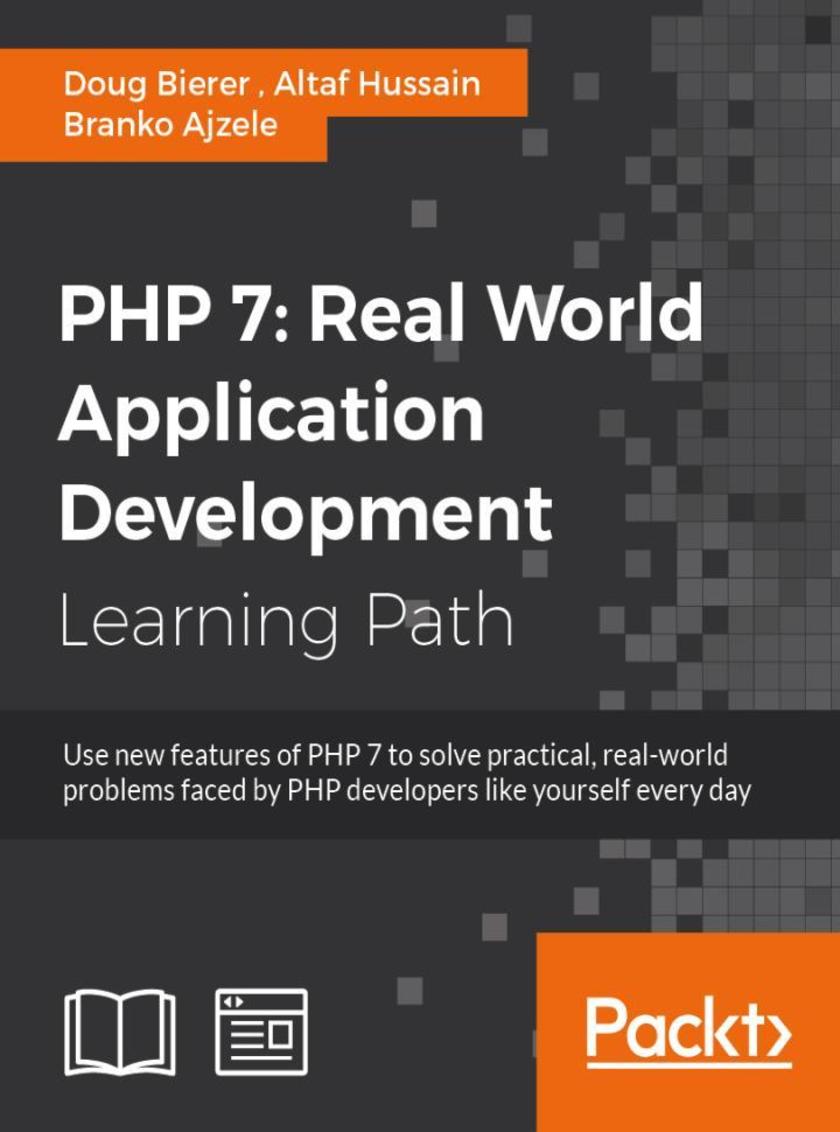
PHP 7: Real World Application Development
¥179.84
Use new features of PHP 7 to solve practical, real-world problems faced by PHP developers like yourself every day. About This Book .This course covers the new features of version 7.x, best practices for server-side programming, and MVC frameworks .Leverage the potential of PHP for server-side programming, memory management, and Object-Oriented Programming to improve your programming productivity .This course also illustrates the development of a complete modular application using PHP 7 in detail Who This Book Is For If you are an aspiring web developer, mobile developer, or back-end programmer, who has basic experience in PHP programming and wants to develop performance-critical applications, then this course is for you. It will take your PHP programming skills to next level. What You Will Learn .Solve practical real-world programming problems using PHP 7 .Discover where and when PHP 5 code needs to be re-written to avoid backwards-compatibility breaks .Use advanced PHP 7 features such as the Abstract Syntax Tree, Uniform Variable Syntax, Scalar Type Hints, Generator Delegation, Anonymous Classes, and the Context Sensitive Lexer .Set up a high performance development and production environment for PHP 7 .Discover new OOP features in PHP 7 to achieve high performance .Discover the new features of PHP 7 that are relevant to modular application development .Explore the ins and outs of the Symfony framework .Build a set of modules based on the Symfony framework that comprise a simple web shop app In Detail PHP is a great language for developing web applications. It is essentially a server-side *ing language. PHP 7 is the latest version, providing major backward-compatibility breaks and focusing on improved performance and speed. This course follows a learning path which is divided into three modules. Each module is a mini course in its own right, taking your basic PHP programing skills to the next level by showing you intermediate to advanced PHP techniques with a focus on PHP 7. This way, get you equipped with the tools and skills required to develop professional and efficient applications for your websites and enterprises. The first module of the book is a programming cookbook that consists over 80 recipes! Each recipe is designed to solve practical, real-world problems faced by PHP developers like yourself every day. This course also covers new ways of writing PHP code made possible only in version 7. The second module of the course is designed to improve the performance and productivity of your application. We’ll introduce you to the concepts of Object-Oriented Programming (OOP) in PHP 7, then shed some light on how to improve the performance of your PHP 7 applications and database. Throughout this module you will be introduced to benchmarking tools. With all important concepts of PHP covered up you will move on to third module. In this module you will gain a deep insight into the modular programming paradigm and how to achieve modularity in your PHP code. Modular design techniques help you build readable, manageable, reusable, and more efficient codes. PHP 7, which is a popular open source *ing language, is used to build modular functions for your software. This Learning Path combines some of the best that Packt has to offer in one complete, curated package. It includes content from the following Packt products: .PHP 7 Programming Cookbook, Doug Bierer .Learning PHP 7 High Performance, Altaf Hussain .Modular Programming with PHP 7, Branko Ajzele Style and approach This book takes a practical, step-by-step approach with real-world examples that serve as building blocks for your application development and guide you through improving the quality of your code.
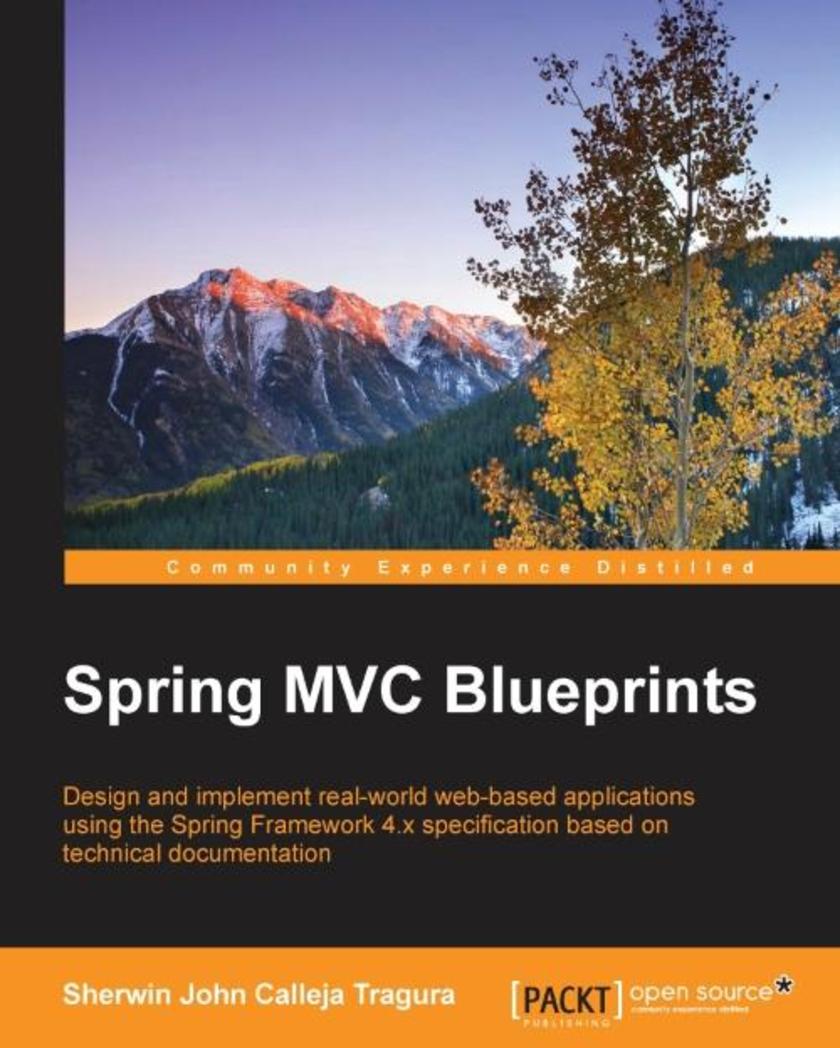
Spring MVC Blueprints
¥90.46
Design and implement real-world web-based applications using the Spring Framework 4.x specification based on technical documentation About This Book . Learn all the details of implementing Spring 4.x MVC applications from basic core platform construction to advanced integration implementations. Gain a complete reference guide to implementing the controllers, models, views, view resolvers, and other service-related components to solve various real-world problems. Discover the possible optimal solutions for developers and experts to build enterprise and personal web-based applications. Create a Spring MVC application that has a validation process and exception handling with the HTTP status codes Who This Book Is For This book is for competent Spring developers who wish to understand how to develop complex yet flexible applications with Spring MVC. You must have a good knowledge of JAVA programming and be familiar with the basics of Spring. What You Will Learn . Set up and configure the Spring 4.x MVC platform from ground level up using the basic Spring Framework 4.x APIs. Study requirements and manage solutions on file uploading transactions in Spring 4.x applications Configure, , and test Spring integration to the Hibernate, MyBatis, and JPA frameworks for database transactions. Properly implement exception handlers and audit trails in Spring MVC applications. Generate reports using JFreeChart, Google Charts, JasperReports, DynamicReports, FreeMarker, Velocity, and Spring’s API known as ContentNegotiatingViewResolver. Configure security and flexibility by adding Captcha, Spring Security, Spring Flow, Spring Portlets, JTA to improve data management performance. Implement web services using Spring’s RESTful implementation and other service-oriented integration plugins. Design and implement a Spring 4.x application using AngularJS, ExtJs, Twitter Bootstrap, and Spring Mobile for responsive web design In Detail Spring MVC is the ideal tool to build modern web applications on the server side. With the arrival of Spring Boot, developers can really focus on the code and deliver great value, leveraging the rich Spring ecosystem with minimal configuration. Spring makes it simple to create RESTful applications, interact with social services, communicate with modern databases, secure your system, and make your code modular and easy to test. It is also easy to deploy the result on different cloud providers. This book starts all the necessary topics in starting a Spring MVC-based application. Moving ahead it explains how to design model objects to handle file objects. save files into a data store and how Spring MVC behaves when an application deals with uploading and downloading files. Further it highlights form transactions and the user of Validation Framework as the tool in validating data input. It shows how to create a customer feedback system which does not require a username or password to log in. It will show you the soft side of Spring MVC where layout and presentation are given importance. Later it will discuss how to use Spring Web Flow on top of Spring MVC to create better web applications. Moving ahead, it will teach you how create an Invoice Module that receives and transport data using Web Services By the end of the book you will be able to create efficient and flexible real-time web applications using all the frameworks in Spring MVC. Style and approach This book is a compendium of technical specification documents that will guide you through building an application using Spring 4.x MVC. Each chapter starts with a high-level wireframe design of the software followed by how to set up and configure different libraries and tools.
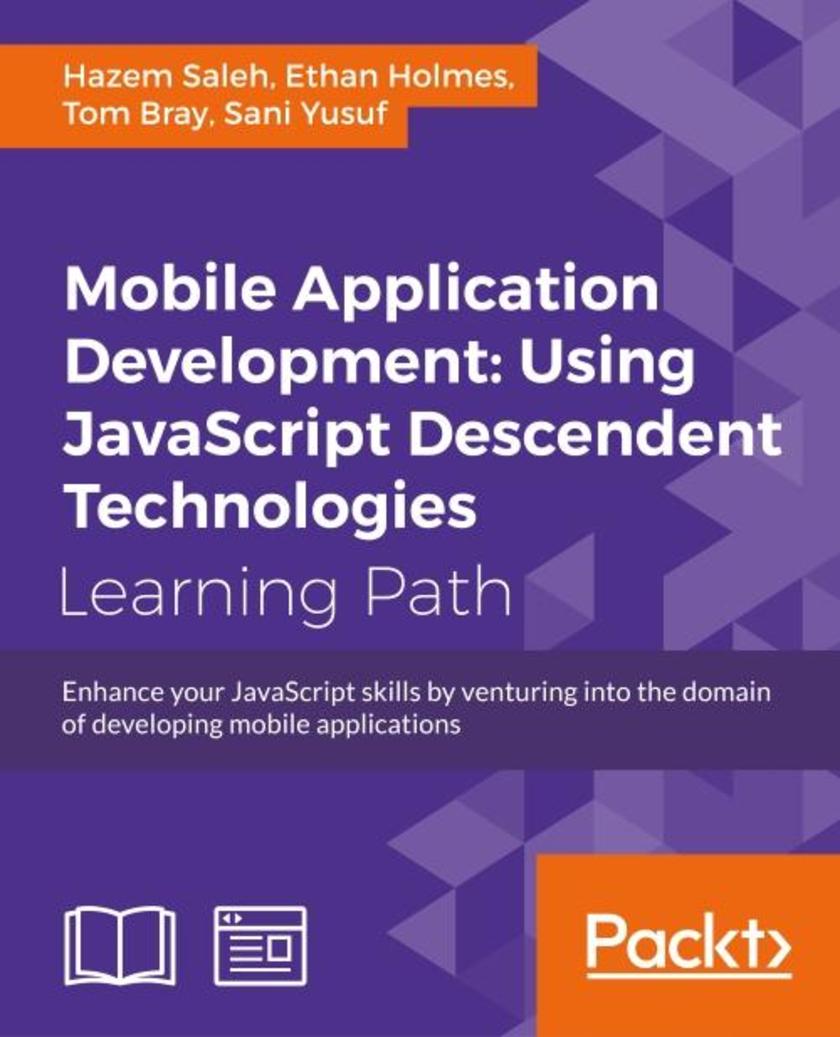
Mobile Application Development: JavaScript Frameworks
¥135.15
Enhance your JavaScript skills by venturing into the domain of developing mobile applications About This Book .Extend your JavaScript skillset to build, test, and launch mobile apps with confidence .Follow three sample projects to experience Ionic’s impressive capabilities .Extend the power of Apache Cordova by creating your own Apache Cordova cross-platform mobile plugins Who This Book Is For This Learning Path is for JavaScript web developers looking to develop mobile applications using various JavaScript descendent technologies. It is for anyone who wants to learn how to build fast and stylish native mobile app using the skills they already have. If you are already using React on the web, we’re confident you’ll be able to quickly get up and running with React Native for iOS and Android. See Ionic in action, and find out how it can transform the way you build mobile apps. What You Will Learn .Develop, build, run, and deploy great cross-platform mobile applications using Apache Cordova .Create complete mobile apps using Apache Cordova that runs on Apple iOS, Google Android, and Windows Phone .Create a neat user interface for your mobile application using jQuery Mobile .Gain an in-depth understanding of how React Native works behind the scenes .Write your own custom native UI components .Develop native modules in Objective-C and Java that interact with JavaScript .Get to know Ionic by creating three complete mobile applications In Detail A great mobile app is rapidly becoming crucial for a huge range of businesses. With a great app, your customers or your readers don’t come to you – you go with them, just a few clicks and swipes away. This Learning Path shows you how to build awesome mobile apps with some of the best tools currently being used by some of the smartest developers in the industry. Taking you through JavaScript impressive development ecosystem – from jQuery Mobile to React, through to Ionic – we’ll show you how to put your skills into practice so you can build your next mobile apps with confidence and style. In this Learning Path, from jQuery to React, to Ionic, we’ll cover everything you need to start In the first module you’ll learn how to get stuck into Apache Cordova and find out how to use it as the key platform for developing your mobile app. It offers an efficient way to develop hybrid apps, which means you won’t have to connect to platform specific APIs or use their UI framework, and can instead harness your JavaScript web development skills. Make sure you have your HTML, CSS and jQuery skills at the ready. In Module 2 we’ll show you how to take advantage of React Native. It has a reputation for having a steep learning curve, but we’ll make it easy for you, making sure you make full use of your existing knowledge and getting you up and running with a sample application. You’ll also learn how to create components, how to create multiple screens, as well as using native UI components and accessing native APIs. In the third and final module you’ll get started with Ionic. With three practical projects you can build yourself, we’ve made sure that you’ll be learning by doing – which means you’ll not only develop new skills much more quickly, but you’ll have produced something tangible at the end of it! This Learning Path combines some of the best that Packt has to offer in one complete, curated package. It includes content from the following Packt products: .JavaScript Mobile Application Development by Hazem Saleh .Getting Started with React Native by Ethan Holmes and Tom Bray .Ionic Framework By Example by Sani Yusuf Style and approach This Learning Path course provides a simple and easy way to build mobile applications in JavaScript descendent technologies such as jQuery, ReactJS, and Ionic.

ROS Robotics By Example
¥90.46
Bring life to your robot using ROS robotic applications About This Book .This book will help you boost your knowledge of ROS and give you advanced practical experience you can apply to your ROS robot platforms.This is the only book that offers you step-by-step instructions to solidify your ROS understanding and gain experience using ROS tools.From eminent authors, this book offers you a plethora of fun-filled examples to make your own quadcopter, turtlebot, and two-armed robots Who This Book Is For If you are a robotics developer, whether a hobbyist, researchers or professional, and are interested in learning about ROS through a hands-on approach, then this book is for you. You are encouraged to have a working knowledge of GNU/Linux systems and Python. What You Will Learn .Get to know the fundamentals of ROS and apply its concepts to real robot examples.Control a mobile robot to navigate autonomously in an environment.Model your robot designs using URDF and Xacro, and operate them in a ROS Gazebo simulation.Control a 7 degree-of-freedom robot arm for visual servoing.Fly a quadcopter to autonomous waypoints.Gain working knowledge of ROS tools such as Gazebo, rviz, rqt, and Move-It.Control robots with mobile devices and controller boards In Detail The visionaries who created ROS developed a framework for robotics centered on the commonality of robotic systems and exploited this commonality in ROS to expedite the development of future robotic systems. From the fundamental concepts to advanced practical experience, this book will provide you with an incremental knowledge of the ROS framework, the backbone of the robotics evolution. ROS standardizes many layers of robotics functionality from low-level device drivers to process control to message passing to software package management. This book provides step-by-step examples of mobile, armed, and flying robots, describing the ROS implementation as the basic model for other robots of these types. By controlling these robots, whether in simulation or in reality, you will use ROS to drive, move, and fly robots using ROS control. Style and approach This is an easy-to-follow guide with hands-on examples of ROS robots, both real and in simulation.
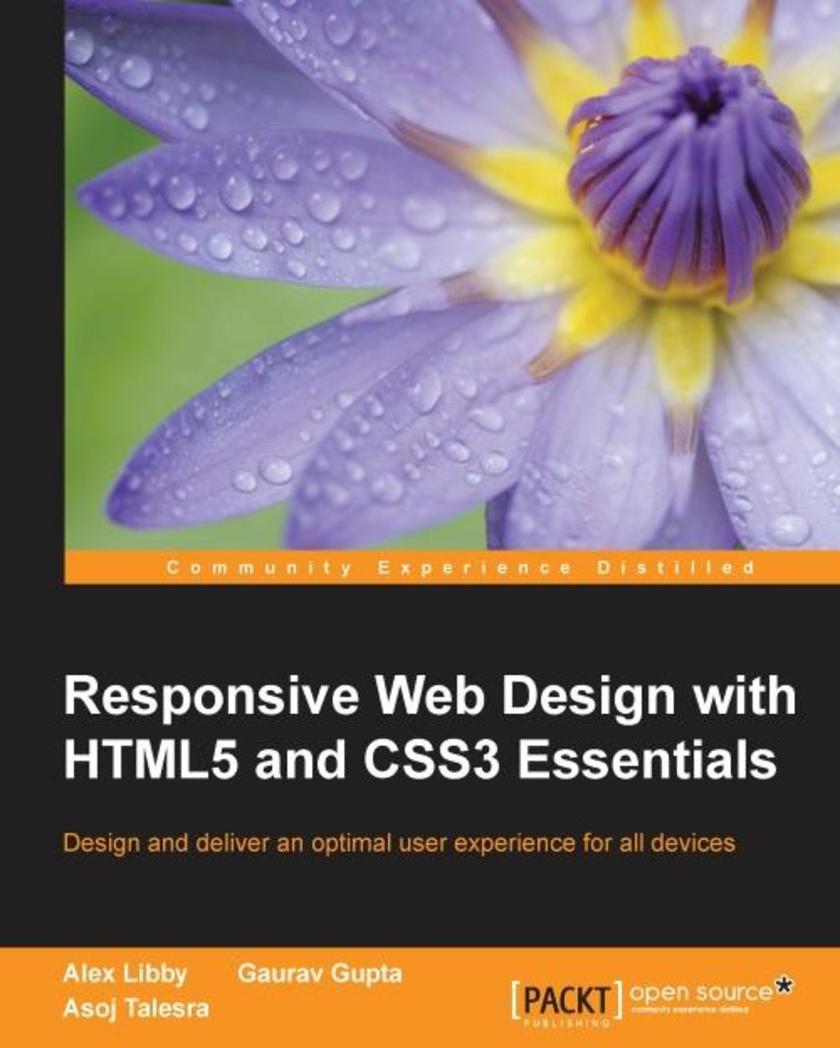
Responsive Web Design with HTML5 and CSS3 Essentials
¥50.13
Design and deliver an optimal user experience for all devices About This Book .Get to grips with the core functionality of RWD through examples.Discover how to make layouts, content and media flexible, and explore why a content-first approach is more effective.Maximize the performance of your web pages so that they work across all browsers and devices irrespective of the screen size Who This Book Is For This book is for web designers who are familiar with HTML and CSS, and want to begin with responsive web design. Web development experience and knowledge of HTML5, CSS3 is assumed. What You Will Learn .Explore various layout options.Understand what can be achieved in the browser, without the use of third-party tools.Executing media queries to benefit responsive designs.Understand the basics of responsive workflow and boilerplate frameworks.Improve performance of responsive web design.Maintain compatibility across various browsers In Detail Responsive web design (RWD) is a web design approach aimed at crafting sites to provide an optimal viewing and interaction experience—providing easy reading and navigation with minimum resizing, panning, and scrolling—and all of this across a wide range of devices from desktop computer monitors to mobile phones. Responsive web design is becoming more important as the amount of mobile traffic now accounts for more than half of the Internet’s total traffic. This book will give you in depth knowledge about the basics of responsive web design. You will embark on a journey of building effective responsive web pages that work across a range of devices, from mobile phones to smart TVs, with nothing more than standard markup and styling techniques. You'll begin by getting an understanding of what RWD is and its significance to the modern web. Building on the basics, you'll learn about layouts and media queries. Following this, we’ll dive into creating layouts using grid based templates. We’ll also cover the important topic of performance management, and discover how to tackle cross-browser challenges. Style and approach This is a practical example-based book which will delve into various elements and benefits of a responsive web design. It will help you understand the essential skills needed to create responsive web sites and guide you through the basics of building responsive web pages for any device. The topics are a blend of theoretical and practical essentials which will assist you to explore more about responsive web design.
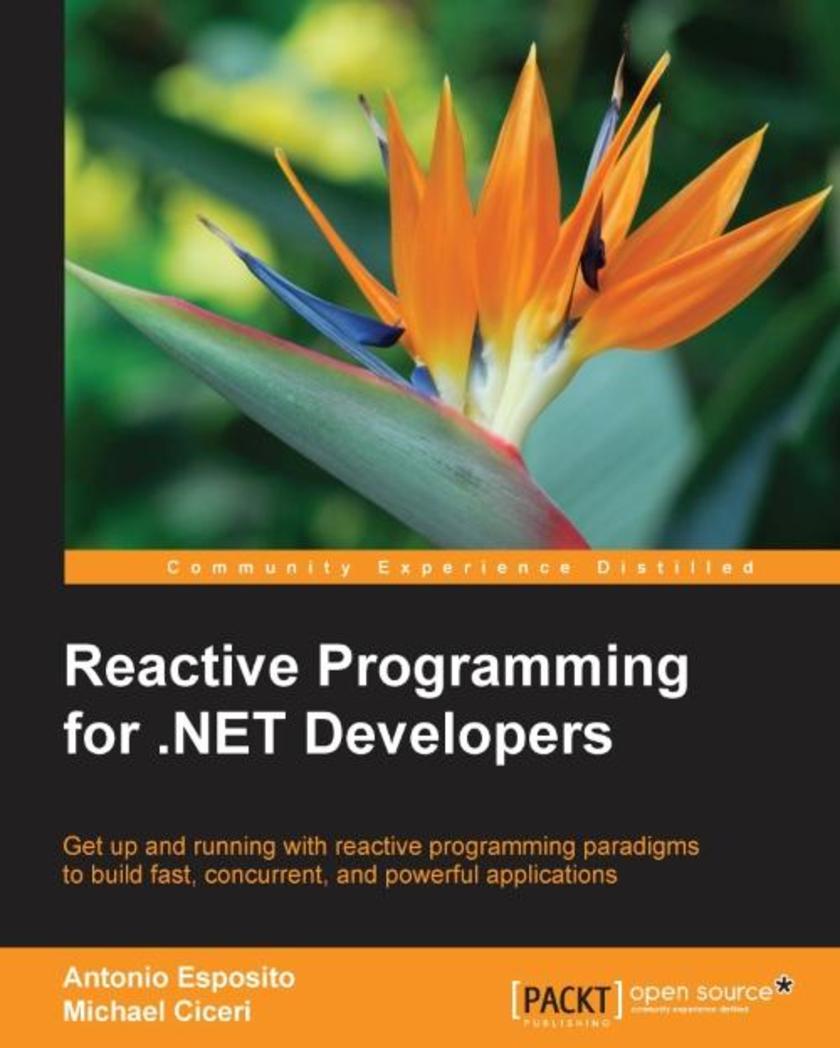
Reactive Programming for .NET Developers
¥80.65
Get up and running with reactive programming paradigms to build fast, concurrent, and powerful applications About This Book . Get to grips with the core design principles of reactive programming . Learn about Reactive Extensions for .NET through real-world examples . Improve your problem-solving ability by applying functional programming Who This Book Is For If you are a .NET developer who wants to implement all the reactive programming paradigm techniques to create better and more efficient code, then this is the book for you. No prior knowledge of reactive programming is expected. What You Will Learn . Create, manipulate, and aggregate sequences in a functional-way . Query observable data streams using standard LINQ query operators . Program reactive observers and observable collections with C# . Write concurrent programs with ease, scheduling actions on various workers . Debug, analyze, and instrument Rx functions . Integrate Rx with CLR events and custom scheduling . Learn Functional Reactive Programming with F# In Detail Reactive programming is an innovative programming paradigm focused on time-based problem solving. It makes your programs better-performing, easier to scale, and more reliable. Want to create fast-running applications to handle complex logics and huge datasets for financial and big-data challengesThen you have picked up the right book! Starting with the principles of reactive programming and unveiling the power of the pull-programming world, this book is your one-stop solution to get a deep practical understanding of reactive programming techniques. You will gradually learn all about reactive extensions, programming, testing, and debugging observable sequence, and integrating events from CLR data-at-rest or events. Finally, you will dive into advanced techniques such as manipulating time in data-flow, customizing operators and providers, and exploring functional reactive programming. By the end of the book, you'll know how to apply reactive programming to solve complex problems and build efficient programs with reactive user interfaces. Style and approach This is a concise reference manual for reactive programming with Rx for C# and F# using real-world, practical examples.
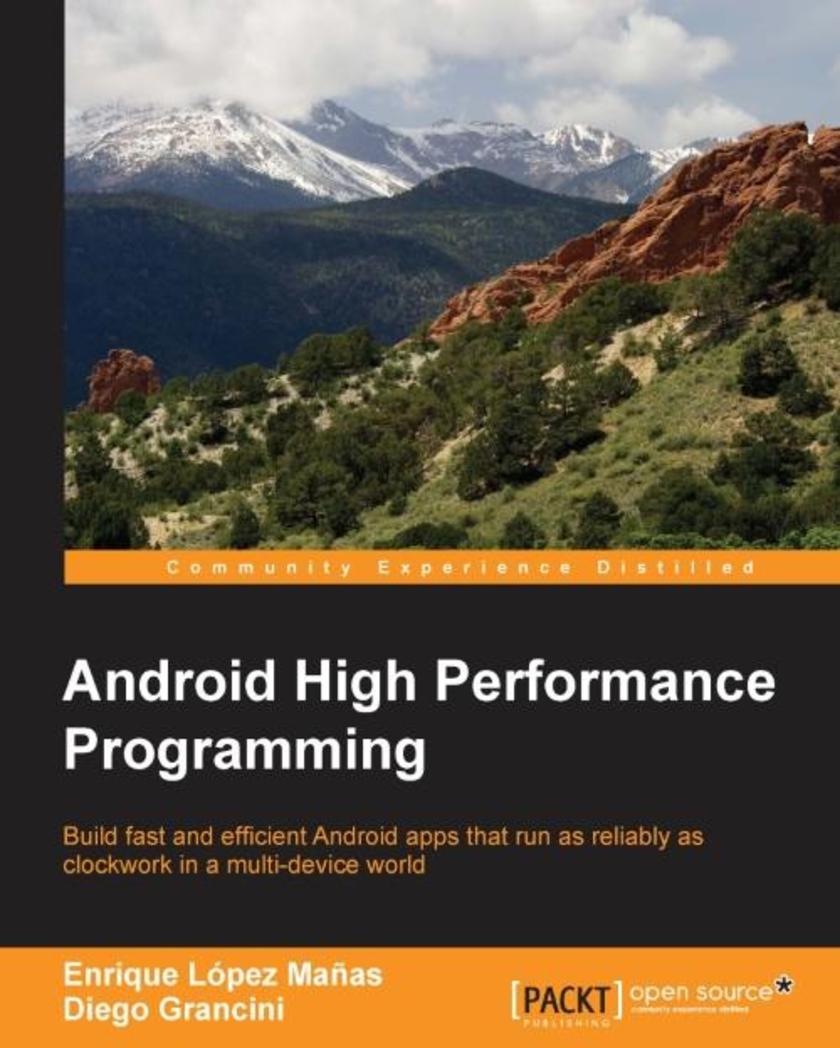
Android High Performance Programming
¥90.46
Build fast and efficient Android apps that run as reliably as clockwork in a multi-device world About This Book . Wide coverage of various topics that help in developing optimal applications . Explore the concepts of Advanced Native Coding in depth . A must-have for professional-standard Android developers for whom performance failures and the sloppy use of resources are simply unacceptable Who This Book Is For This book is aimed at developers with an advanced knowledge of Android and who want to test their skills and learn new techniques to increase the performance of their applications. We assume they are comfortable working with the entire Android SDK, and have been doing it for a few years. They need to be familiar with frameworks such as NDK to use native code, which is crucial for app performance What You Will Learn . Create Android applications that squeeze the most from the limited resource capacity of devices . Swap code that isn’t performing . Efficient memory management by identifying problems such as leaks . Reap the benefits of multithreaded and asynchronous programming . Maximize the security and encryption mechanisms natively provided by Android . Perform efficient network operations and techniques to retrieve data from servers . Master the NDK to write native code that can perform faster operations In Detail Performant applications are one of the key drivers of success in the mobile world. Users may abandon an app if it runs slowly. Learning how to build applications that balance speed and performance with functionality and UX can be a challenge; however, it's now more important than ever to get that balance right. Android High Performance will start you thinking about how to wring the most from any hardware your app is installed on, so you can increase your reach and engagement. The book begins by providing an introduction to state–of-the-art Android techniques and the importance of performance in an Android application. Then, we will explain the Android SDK tools regularly used to debug and profile Android applications. We will also learn about some advanced topics such as building layouts, multithreading, networking, and security. Battery life is one of the biggest bottlenecks in applications; and this book will show typical examples of code that exhausts battery life, how to prevent this, and how to measure battery consumption from an application in every kind of situation to ensure your apps don’t drain more than they should. This book explains techniques for building optimized and efficient systems that do not drain the battery, cause memory leaks, or slow down with time. Style and approach The book follows a tutorial-based approach to take the reader from the basic fundamentals of debugging to advanced performance-improvement concepts.
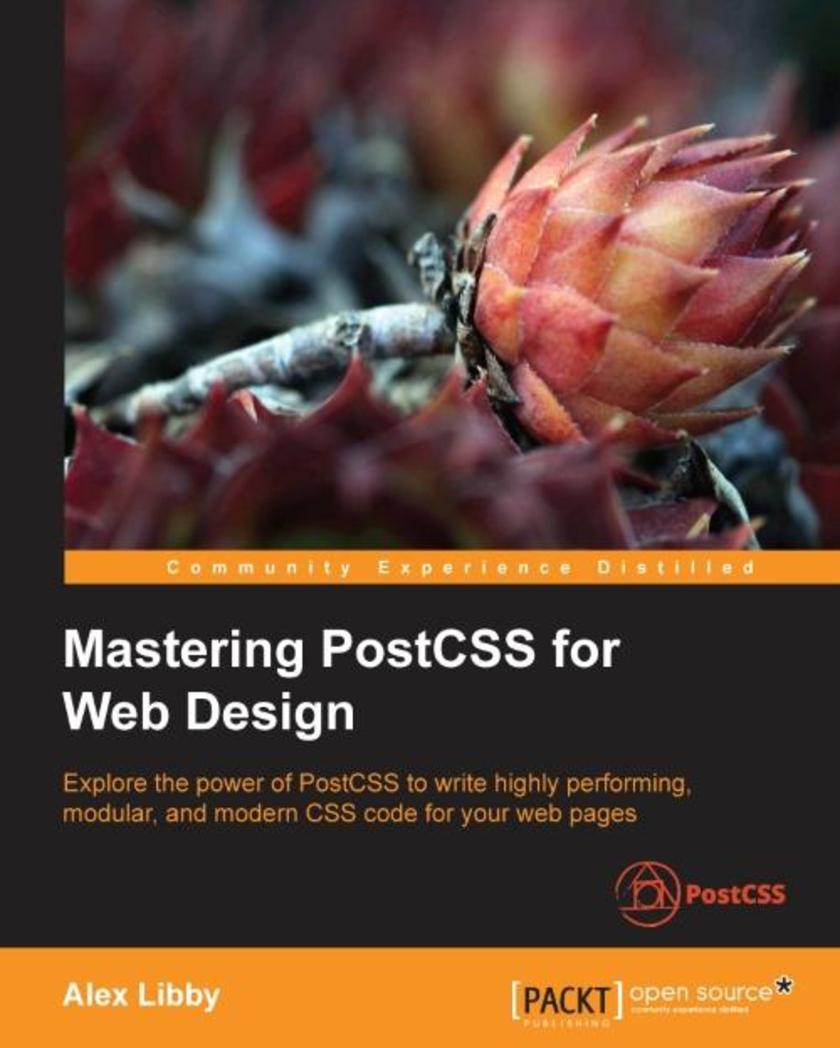
Mastering PostCSS for Web Design
¥80.65
Explore the power of PostCSS to write highly performing, modular, and modern CSS code for your web pages About This Book Incorporate cutting-edge styles in your web pages with PostCSS Simplify the process of writing CSS to a great extent using PostCSS shortcuts, fallbacks, and pack plugins This in-depth, step-by-step guide will help you master PostCSS, to create amazing and responsive web designs Who This Book Is For This book is ideal for web developers and designers who are comfortable with HTML5 and CSS and now want to master PostCSS for web design. Web designers who have been using SASS or Less and now want to adopt PostCSS would also find this book useful. What You Will Learn Add mixin and variable support to PostCSS along with conditional support Explore the different ways of nesting code such as BEM and standard nesting within PostCSS Optimize media queries built with PostCSS to get the best performance Add dynamic styling elements such as images, fonts, grids, and SVG and retina support using existing preprocessors as well as PostCSS Get familiar with using plugins, and extend PostCSS with the API Build a fully working custom preprocessor and test it on different sites such as WordPress Write a custom syntax in PostCSS while still using pre-built syntaxes such as Less, SASS, or Stylus Provide support for future CSS such as CSS4 using current CSS3 classes In Detail PostCSS is a tool that has quickly emerged as the future of existing preprocessors such as SASS and Less, mainly because of its power, speed, and ease of use. This comprehensive guide offers in-depth guidance on incorporating cutting-edge styles into your web page and at the same time maintaining the performance and maintainability of your code. The book will show how you can take advantage of PostCSS to simplify the entire process of stylesheet authoring. It covers various techniques to add dynamic and modern styling features to your web pages. As the book progresses, you will learn how to make CSS code more maintainable by taking advantage of the modular architecture of PostCSS. By the end of this book, you would have mastered the art of adding modern CSS effects to web pages by authoring high performing, maintainable stylesheets. Style and approach This comprehensive book provides in-depth guidance on how to build a PostCSS powered responsive site from scratch. Following a step-by-step approach, you will learn how to add modern styles to web pages. It also contains several tips and best practices on how you can optimize your sites by writing high performing code in PostCSS.
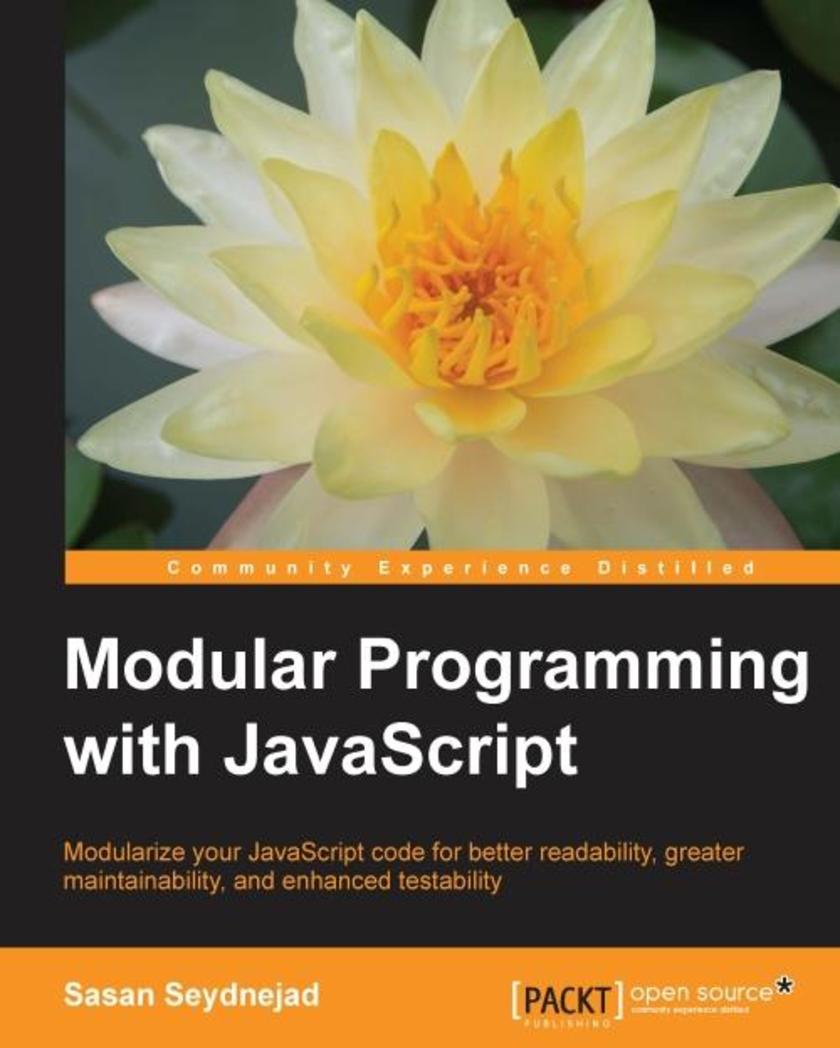
Modular Programming with JavaScript
¥80.65
Modularize your JavaScript code for better readability, greater maintainability, and enhanced testability About This Book Design and build fully modular, modern JavaScript applications using modular design concepts Improve code portability, maintainability, and integrity while creating highly scalable and responsive web applications Implement your own loosely coupled code blocks that can power highly maintainable and powerful applications in a flexible and highly responsive modular architecture Who This Book Is For If you are an intermediate to advanced JavaScript developer who has experience of writing JavaScript code but probably not in a modular, portable manner, or you are looking to develop enterprise level JavaScript applications, then this book is for you. A basic understanding of JavaScript concepts such as OOP, prototypal inheritance, and closures is expected. What You Will Learn Understand the important concepts of OOP in JavaScript, such as scope, objects, inheritance, event delegation, and more Find out how the module design pattern is used in OOP in JavaScript Design and augment modules using both tight augmentation and loose augmentation Extend the capabilities of modules by creating sub-modules using techniques such as cloning and inheritance Move from isolated module pieces to a cohesive, well integrated application modules that can interact and work together without being tightly coupled See how SandBoxing is used to create a medium for all the modules to talk to each other as well as to the core Use the concepts of modular application design to handle dependencies and load modules asynchronously Become familiar with AMD and CommonJS utilities and discover what the future of JavaScript holds for modular programming and architecture In Detail Programming in the modular manner is always encouraged for bigger systems—it is easier to achieve scalability with modular programming. Even JavaScript developers are now interested in building programs in a modular pattern. Modules help people who aren’t yet familiar with code to find what they are looking for and also makes it easier for programmers to keep things that are related close together. Designing and implementing applications in a modular manner is highly encouraged and desirable in both simple and enterprise level applications. This book covers some real-life examples of modules and how we can translate that into our world of programming and application design. After getting an overview of JavaScript object-oriented programming (OOP) concepts and their practical usage, you should be able to write your own object definitions using the module pattern. You will then learn to design and augment modules and will explore the concepts of cloning, inheritance, sub-modules, and code extensibility. You will also learn about SandBoxing, application design, and architecture based on modular design concepts. Become familiar with AMD and CommonJS utilities. By the end of the book, you will be able to build spectacular modular applications in JavaScript. Style and approach This in-depth step-by-step guide will teach you modular programming with JavaScript. Starting from the basics, it will cover advanced modular patterns that can be used in sophisticated JavaScript applications.
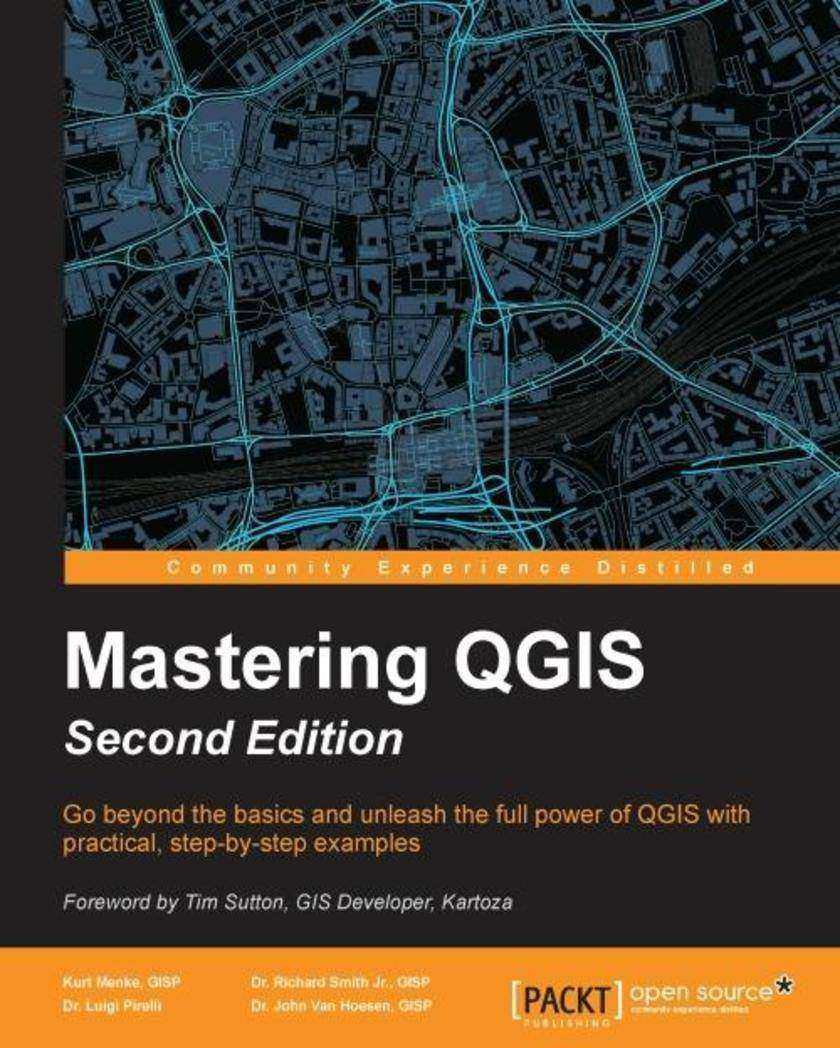
Mastering QGIS - Second Edition
¥99.18
Go beyond the basics and unleash the full power of QGIS with practical, step-by-step examples About This Book This book is your one-stop solution to all of your GIS needs using the open source QGIS Master QGIS by learning about database integration, geoprocessing tools, Python *s, advanced cartography, and custom plugins This example-rich, practical guide will help you create sophisticated analyses and maps Who This Book Is For If you are a GIS professional, a consultant, a student, or perhaps a fast learner who wants to go beyond the basics of QGIS, then this book is for you. It will prepare you to realize the full potential of QGIS. What You Will Learn Create and manage a spatial database Get to know advanced techniques to style GIS data Prepare both vector and raster data for processing Add heat maps, live layer effects, and labels to your maps Master LAStools and GRASS integration with the Processing Toolbox Edit and repair topological data errors Automate workflows with batch processing and the QGIS Graphical Modeler Integrate Python *ing into your data processing workflows Develop your own QGIS plugin In Detail QGIS is an open source solution to GIS. It is widely used by GIS professionals all over the world. It is the leading alternative to the proprietary GIS software. Although QGIS is described as intuitive, it is also by default complex. Knowing which tools to use and how to apply them is essential to producing valuable deliverables on time. Starting with a refresher on the QGIS basics, this book will take you all the way through to creating your first custom QGIS plugin. From the refresher, we will recap how to create, populate, and manage a spatial database. You’ll also walk through styling GIS data, from creating custom symbols and color ramps to using blending modes. In the next section, you will discover how to prepare vector, heat maps, and create live layer effects, labeling, and raster data for processing. You’ll also discover advanced data creation and editing techniques. The last third of the book covers the more technical aspects of QGIS such as using LAStools and GRASS GIS’s integration with the Processing Toolbox, how to automate workflows with batch processing, and how to create graphical models. Finally, you will see how to create and run Python data processing *s and write your own QGIS plugin with pyqgis. By the end of the book, you will understand how to work with all the aspects of QGIS, and will be ready to use it for any type of GIS work. Style and approach This step-by-step comprehensive guide will let you dig your teeth into working with spatial databases, creating your own QGIS plugins, and creating your own custom graphical models.

Arduino: Building LED and Espionage Projects
¥125.34
Find out how to transform your Arduino device into an awesome secret agent gadget with this course, taking in everything from robotics to remote control cameras About This Book ?This course won’t just teach you. It will help you apply your knowledge so you can get creative – quickly! ?Find out how to make a computer interact with the real-world – you’ll be learning the basics of IoT without realizing it. ?Robots. A sound controlled Christmas tree. This course proves anything is possible with an Arduino! Who This Book Is For Seeking inspirationThis course will help you get creative with your Arduino quickly. What You Will Learn ?Find out how to explore the full potential of your tiny Arduino ?Find out how to bridge the gap between the real world and software, as you gather and visualize data from the environment ?Create simple servers to allow communication to occur ?Transform your Arduino into a GPS tracker ?Use the Arduino to monitor top secret data ?Build a complete spy robot! In Detail An Arduino might be a tiny computer but it can be used as the foundation for a huge range of projects. In this course, we’ll show you how just some of the projects that are possible with an Arduino. From robotics to secret agent gadgets, we’re pretty confident that this course will get you thinking creatively – and inspire you to create your very own new projects using the Arduino hacking skills you learn. This course, combines both text and video content – it’s made up of three modules to help organize your learning. In the first module we’ll show you how to build three different Arduino projects. All of these will not only get you up and running with something practical, they’ll also help you better understand how the Arduino works. Find out how to develop a home automation system and even build a robot! In the second module we’ll go one step further to help you get creative as you learn how to program LEDs with your Arduino. You’ll find out how to build a mood lamp and a remote-controlled TV backlight, before going on to make a sound controlled LED Christmas tree that makes use of sound visualization. Finally, the third module takes you from stylish design into espionage, as you learn how to create neat secret agent gadgets with your Arduino. Find out how to build an alarm system, a fingerprint sensor, even open a lock with a text message. And that’s not all – but to find out more you’ll have to dive in! This Learning Path combines some of the best that Packt has to offer in one complete, curated package. It includes content from the following Packt products: ● Arduino By Example by Adith Jagadish Boloor ● Arduino BLINK Blueprints by Samarth Shah, Utsav Shah ● Arduino for Secret Agents by Marco Shwartz Style and approach Combining both video and text and built from some of Packt’s very best Arduino content, this course comprises of three modules covering a range of projects. It’s completely focused on helping the user get creative as quickly as possible so they can explore what’s possible with Arduino themselves.

Embedded Linux for Developers
¥179.84
Leverage the power of Linux to develop captivating and powerful embedded Linux projects About This Book Explore the best practices for all embedded product development stages Learn about the compelling features offered by the Yocto Project, such as customization, virtualization, and many more Minimize project costs by using open source tools and programs Who This Book Is For If you are a developer who wants to build embedded systems using Linux, this book is for you. It is the ideal guide for you if you want to become proficient and broaden your knowledge. A basic understanding of C programming and experience with systems programming is needed. Experienced embedded Yocto developers will find new insight into working methodologies and ARM specific development competence. What You Will Learn Use the Yocto Project in the embedded Linux development process Get familiar with and customize the bootloader for a board Discover more about real-time layer, security, virtualization, CGL, and LSB See development workflows for the U-Boot and the Linux kernel, including debugging and optimization Understand the open source licensing requirements and how to comply with them when cohabiting with proprietary programs Optimize your production systems by reducing the size of both the Linux kernel and root filesystems Understand device trees and make changes to accommodate new hardware on your device Design and write multi-threaded applications using POSIX threads Measure real-time latencies and tune the Linux kernel to minimize them In Detail Embedded Linux is a complete Linux distribution employed to operate embedded devices such as smartphones, tablets, PDAs, set-top boxes, and many more. An example of an embedded Linux distribution is Android, developed by Google. This learning path starts with the module Learning Embedded Linux Using the Yocto Project. It introduces embedded Linux software and hardware architecture and presents information about the bootloader. You will go through Linux kernel features and source code and get an overview of the Yocto Project components available. The next module Embedded Linux Projects Using Yocto Project Cookbook takes you through the installation of a professional embedded Yocto setup, then advises you on best practices. Finally, it explains how to quickly get hands-on with the Freescale ARM ecosystem and community layer using the affordable and open source Wandboard embedded board. Moving ahead, the final module Mastering Embedded Linux Programming takes you through the product cycle and gives you an in-depth de*ion of the components and options that are available at each stage. You will see how functions are split between processes and the usage of POSIX threads. By the end of this learning path, your capabilities will be enhanced to create robust and versatile embedded projects. This Learning Path combines some of the best that Packt has to offer in one complete, curated package. It includes content from the following Packt products: Learning Embedded Linux Using the Yocto Project by Alexandru Vaduva Embedded Linux Projects Using Yocto Project Cookbook by Alex González Mastering Embedded Linux Programming by Chris Simmonds Style and approach This comprehensive, step-by-step, pragmatic guide enables you to build custom versions of Linux for new embedded systems with examples that are immediately applicable to your embedded developments. Practical examples provide an easy-to-follow way to learn Yocto project development using the best practices and working methodologies. Coupled with hints and best practices, this will help you understand embedded Linux better.
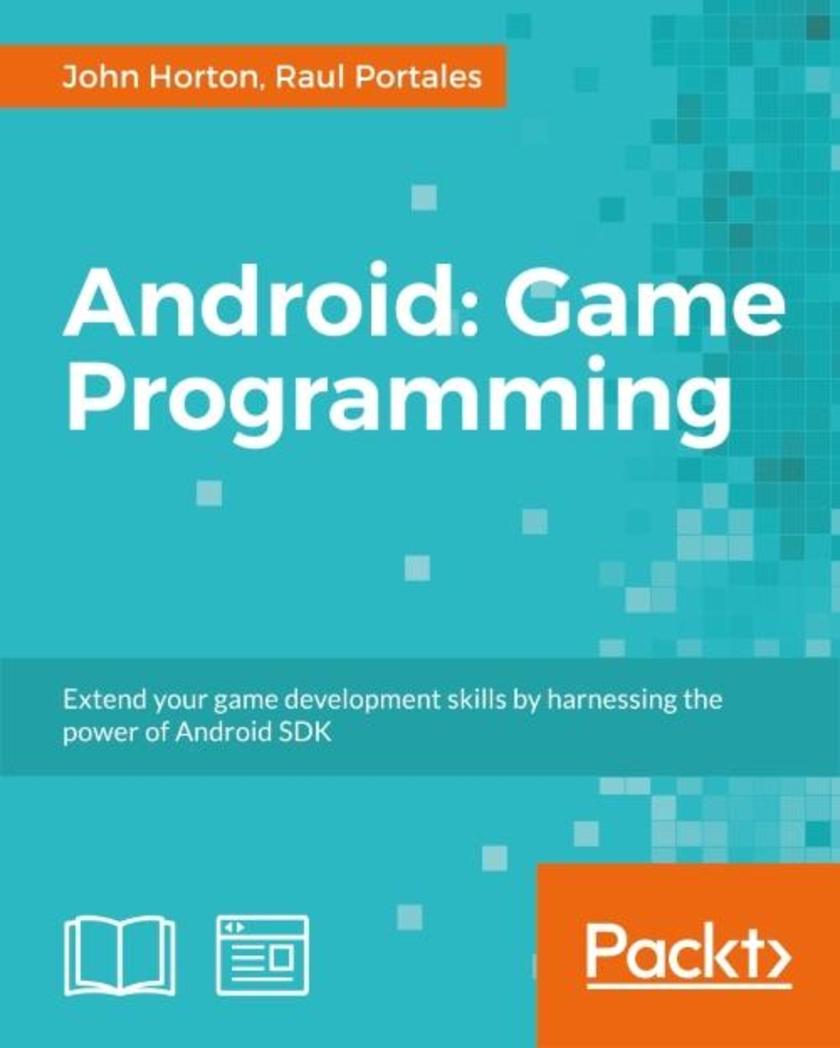
Android: Game Programming
¥179.84
Extend your game development skills by harnessing the power of Android SDK About This Book Gain the knowledge to design and build highly interactive and amazing games for your phone and tablet from scratch Create games that run at super-smooth 60 frames per second with the help of these easy-to-follow projects Understand the internals of a game engine by building one and seeing the reasoning behind each of the components Who This Book Is For If you are completely new to Java, Android, or game programming, this book is for you. If you want to publish Android games for fun or for business and are not sure where to start, then this book will show you what to do, step by step, from the start. What You Will Learn Set up an efficient, professional game development environment in Android Studio Explore object-oriented programming (OOP) and design scalable, reliable, and well-written Java games or apps on almost any Android device Build simple to advanced game engines for different types of game, with cool features such as sprite sheet character animation and scrolling parallax backgrounds Implement basic and advanced collision detection mechanics Process multitouch screen input effectively and efficiently Implement a flexible and advanced game engine that uses OpenGL ES 2 to ensure fast, smooth frame rates Use animations and particle systems to provide a rich experience Create beautiful, responsive, and reusable UIs by taking advantage of the Android SDK Integrate Google Play Services to provide achievements and leaderboards to the players In Detail Gaming has historically been a strong driver of technology, whether we're talking about hardware or software performance, the variety of input methods, or graphics support, and the Android game platform is no different. Android is a mature, yet still growing, platform that many game developers have embraced as it provides tools, APIs, and services to help bootstrap Android projects and ensure their success, many of which are specially designed to help game developers. Since Android uses one of the most popular programming languages, Java, as the primary language to build apps of all types, you will start this course by first obtaining a solid grasp of the Java language and its foundation APIs. This will improve your chances of succeeding as an Android app developer. We will show you how to get your Android development environment set up and you will soon have your first working game. The course covers all the aspects of game development through various engrossing and insightful game projects. You will learn all about frame-by-frame animations and resource animations using a space shooter game, create beautiful and responsive menus and dialogs, and explore the different options to play sound effects and music in Android. You will also learn the basics of creating a particle system and will see how to use the Leonids library. By the end of the course, you will be able to configure and use Google Play Services on the developer console and port your game to the big screen. This Learning Path combines some of the best that Packt has to offer in one complete, curated package. It includes content from the following Packt products: Learning Java by Building Android Games by John Horton Android Game Programming by Example by John Horton Mastering Android Game Development by Raul Portales Style and approach This course is a step-by-step guide where you will learn to build Android games from scratch. It takes a practical approach where each project is a game. It starts off with simple arcade games, and then gradually the complexity of the games keep on increasing as you uncover the new and advanced tools that Android offers.

Python: Master the Art of Design Patterns
¥152.59
Ensure your code is sleek, efficient and elegant by mastering powerful Python design patterns About This Book Learn all about abstract design patterns and how to implement them in Python 3 Understand the structural, creational, and behavioral Python design patterns Get to know the context and application of design patterns to solve real-world problems in software architecture, design, and application development Discover how to simplify Design Pattern implementation using the power of Python 3 Who This Book Is For If you have basic Python skills and wish to learn in depth how to correctly apply appropriate design patterns, this course is tailor made for you. What You Will Learn Discover what design patterns are and how to apply them to writing Python Implement objects in Python by creating classes and defining methods Separate related objects into a taxonomy of classes and describe the properties and behaviors of those objects via the class interface Understand when to use object-oriented features, and more importantly when not to use them Get to know proven solutions to common design issues Explore the design principles that form the basis of software design, such as loose coupling, the Hollywood principle, and the Open Close principle, among others Use Structural Design Patterns and find out how objects and classes interact to build larger applications Improve the productivity and code base of your application using Python design patterns Secure an interface using the Proxy pattern In Detail Python is an object-oriented *ing language that is used in everything from data science to web development. Known for its simplicity, Python increases productivity and minimizes development time. Through applying essential software engineering design patterns to Python, Python code becomes even more efficient and reusable from project to project. This learning path takes you through every traditional and advanced design pattern best applied to Python code, building your skills in writing exceptional Python. Divided into three distinct modules, you’ll go from foundational to advanced concepts by following a series of practical tutorials. Start with the bedrock of Python programming – the object-oriented paradigm. Rethink the way you work with Python as you work through the Python data structures and object-oriented techniques essential to modern Python programming. Build your confidence as you learn Python syntax, and how to use OOP principles with Python tools such as Django and Kivy. In the second module, run through the most common and most useful design patterns from a Python perspective. Progress through Singleton patterns, Factory patterns, Fa?ade patterns and more all with detailed hands-on guidance. Enhance your professional abilities in in software architecture, design, and development. In the final module, run through the more complex and less common design patterns, discovering how to apply them to Python coding with the help of real-world examples. Get to grips with the best practices of writing Python, as well as creating systems architecture and troubleshooting issues. This Learning Path combines some of the best that Packt has to offer in one complete, curated package. It includes content from the following Packt products: Python 3 Object-Oriented Programming - Second Edition by Dusty Phillips Learning Python Design Patterns - Second Edition by Chetan Giridhar Mastering Python Design Patterns by Sakis Kasampalis Style and approach Advance your Python code through three distinct modules that each build on preceding content. Get the complete coverage of Python design patterns you need to write elegant and efficient code that’s reusable and powerful.

Buildbox 2.x Game Development
¥80.65
Build rich, high production value mobile games and distribute them across different platforms with Buildbox About This Book Create captivating 2D & 2.5D (isometric) video games for all platforms Leverage Buildbox to monetize and prepare your games for distribution This step-by-step tutorial will get you generating complex and media rich games with no coding experience Who This Book Is For This book caters to those who have an interest or desire to create their own mobile games either as a hobbyist or who are looking to enhance their skills as a professional games developer. No coding experience is required. What You Will Learn Create the illusion of a 3D background in your game using parallax Add advanced controls and obstacles to our first world Develop assets (graphic and audio) for the Buildbox engine Design games based on the capabilities and limitations of Buildbox and their target platforms Compile and distribute video games on various channels such as Steam, iOS store, Android stores, and the Mac App Store Optimize your games to get the absolute best quality within platform restrictions Conquer common issues experienced with Buildbox development In Detail Buildbox is an “any skill level” development platform to develop video games with no coding experience. It also exports these games to be compiled for any platform (from Windows to Mac to iOS to Android and Blackberry) all using the same graphic user interface. Using an example as a tutorial, we will relate the driving principles and you’ll see how you can implement these principles to develop any games on the platform. We begin by setting expectations and providing a brief overview of the software. But it’s not long before you “dive in” to creating your first video game. You will actually have a playable level (“world”) by the end of the second chapter. Later on, you’ll learn everything from basic graphics creation to advanced world design while you refine your first game, called “Ramblin’ Rover.” All along the way, you will see how certain functions could be used in tandem to create other types of games; hoping to spark imagination. We will follow the principles and process of monetization through ads and in-game rewards. Lastly, we will go through the process of exporting, compiling, and preparing your storefront to sell the games you will eventually create. Style and approach This book follows a tutorial-based approach that teaches through examples, while also providing the necessary principles to enable you to abstract these principles into any game you want to make.
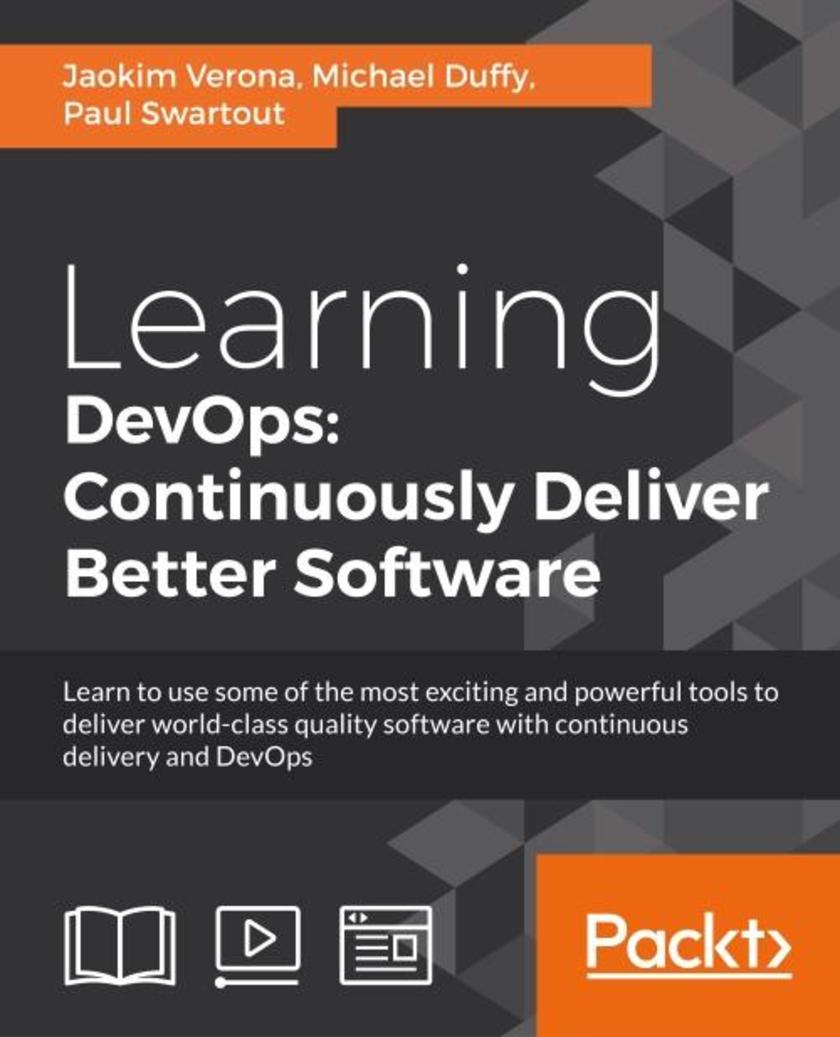
Learning DevOps: Continuously Deliver Better Software
¥152.59
Learn to use some of the most exciting and powerful tools to deliver world-class quality software with continuous delivery and DevOps About This Book Get to know the background of DevOps so you understand the collaboration between different aspects of an IT organization and a software developer Deploy top-quality software and ensure software maintenance and release management with this practical guide This course covers some of the most exciting technology available to DevOps engineers, and demonstrates multiple techniques for using them Real-world and realistic examples are provided to help you as you go about the implementation and adoption of continuous delivery and DevOps Who This Book Is For This course is for developers who want to understand how the infrastructure that builds today's enterprises works, and how to painlessly and regularly ship quality software. What You Will Learn Set up and familiarize yourself with all the tools you need to be efficient with DevOps Design an application that is suitable for continuous deployment systems with DevOps in mind Test the code using automated regression testing with Jenkins Selenium Managing the lifecycle of hosts, from creation to ongoing management using Puppet Razor Find out how to manage, use, and work with Code in the Git version management system See what traps, pitfalls, and hurdles to look out for as you implement continuous delivery and DevOps In Detail Harness the power of DevOps to boost your skill set and make your IT organization perform better. If you’re keen to employ DevOps techniques to better your software development, this course contains all you need to overcome the day-to-day complications of managing complex infrastructures the DevOps way. Start with your first module – Practical DevOps - that encompasses the entire flow from code from testing to production. Get a solid ground-level knowledge of how to monitor code for any anomalies, perform code testing, and make sure the code is running smoothly through a series of real-world exercise, and develop practical skills by creating a sample enterprise Java application. In the second module, run through a series of tailored mini-tutorials designed to give you a complete understanding of every DevOps automation technique. Create real change in the way you deliver your projects by utilizing some of the most commendable software available today. Go from your first steps of managing code in Git to configuration management in Puppet, monitoring using Sensu, and more. In the final module, get to grips with the continuous delivery techniques that will help you reduce the time and effort that goes into the delivery and support of software. This Learning Path combines some of the best that Packt has to offer in one complete, curated package. It includes content from the following Packt products: Practical DevOps by Joakim Verona DevOps Automation Cookbook by Michael Duffy Continuous Delivery and DevOps : A Quickstart Guide - Second Edition by Paul Swartout Style and approach This course is an easy to follow project based guide for all those with a keen interest in deploying world-class software using some of the most effective and remarkable technologies available.
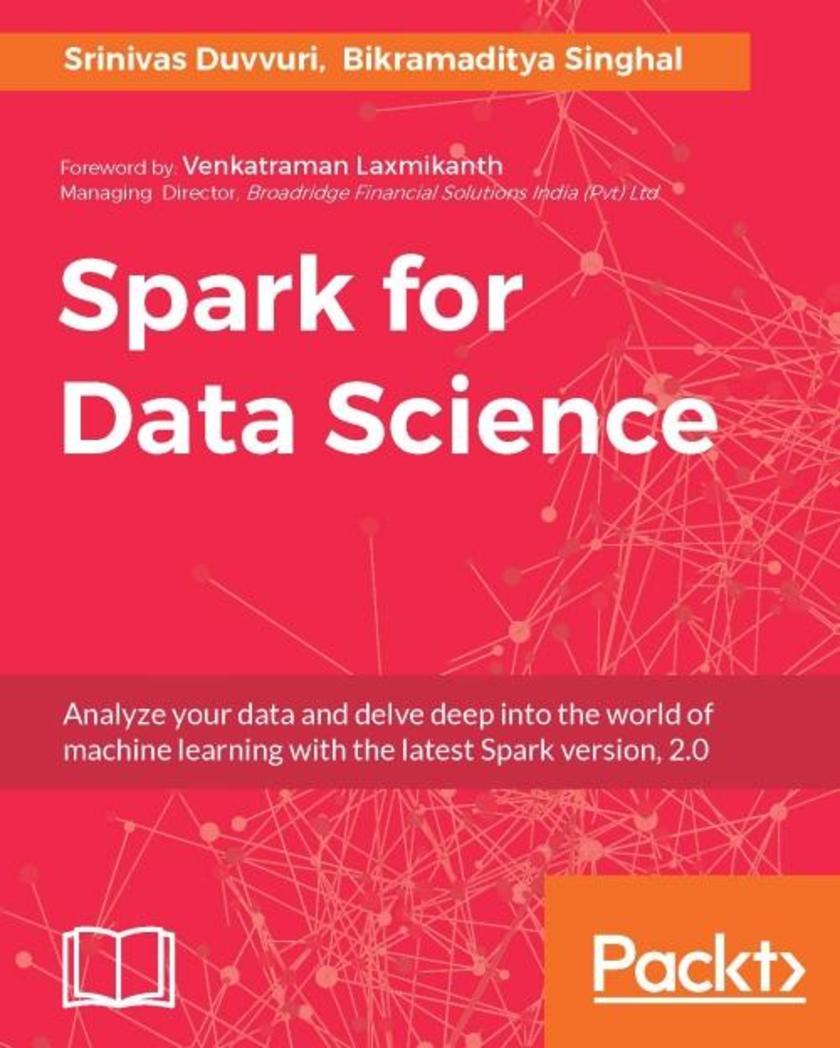
Spark for Data Science
¥90.46
Analyze your data and delve deep into the world of machine learning with the latest Spark version, 2.0 About This Book Perform data analysis and build predictive models on huge datasets that leverage Apache Spark Learn to integrate data science algorithms and techniques with the fast and scalable computing features of Spark to address big data challenges Work through practical examples on real-world problems with sample code snippets Who This Book Is For This book is for anyone who wants to leverage Apache Spark for data science and machine learning. If you are a technologist who wants to expand your knowledge to perform data science operations in Spark, or a data scientist who wants to understand how algorithms are implemented in Spark, or a newbie with minimal development experience who wants to learn about Big Data Analytics, this book is for you! What You Will Learn Consolidate, clean, and transform your data acquired from various data sources Perform statistical analysis of data to find hidden insights Explore graphical techniques to see what your data looks like Use machine learning techniques to build predictive models Build scalable data products and solutions Start programming using the RDD, DataFrame and Dataset APIs Become an expert by improving your data analytical skills In Detail This is the era of Big Data. The words ‘Big Data’ implies big innovation and enables a competitive advantage for businesses. Apache Spark was designed to perform Big Data analytics at scale, and so Spark is equipped with the necessary algorithms and supports multiple programming languages. Whether you are a technologist, a data scientist, or a beginner to Big Data analytics, this book will provide you with all the skills necessary to perform statistical data analysis, data visualization, predictive modeling, and build scalable data products or solutions using Python, Scala, and R. With ample case studies and real-world examples, Spark for Data Science will help you ensure the successful execution of your data science projects. Style and approach This book takes a step-by-step approach to statistical analysis and machine learning, and is explained in a conversational and easy-to-follow style. Each topic is explained sequentially with a focus on the fundamentals as well as the advanced concepts of algorithms and techniques. Real-world examples with sample code snippets are also included.




 购物车
购物车 个人中心
个人中心



